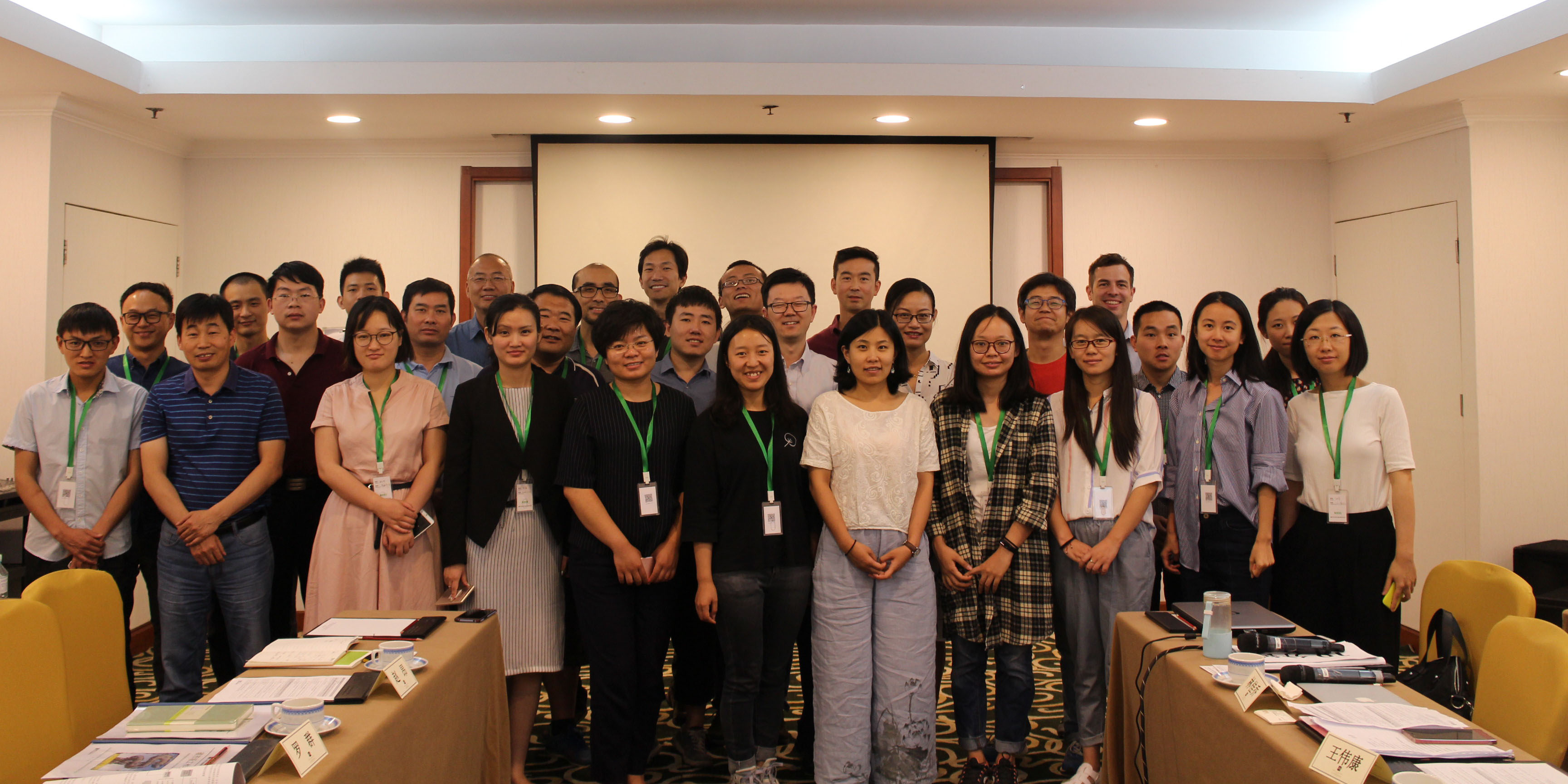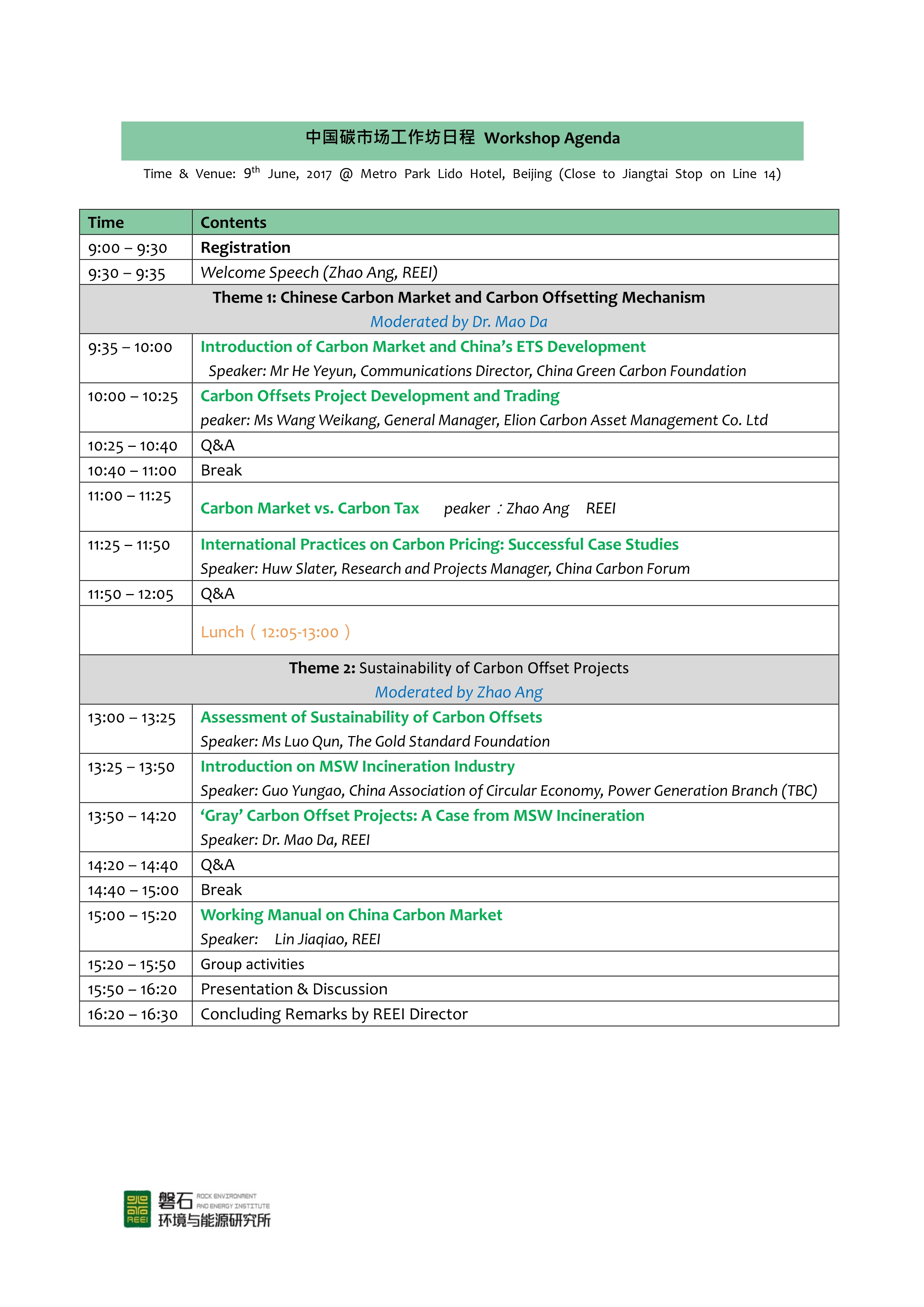

Time : 9th June, 2017;
Venue: Metro Park Lido Hotel, Beijing (Close to Jiangtai Stop on Line 14)
Organizer: Rock Environment and Energy Institute (REEI)
Background:
According
to the World Bank report, by the end of 2016, about 60 countries,
regions and cities around the world implemented carbon pricing, covering
greenhouse gas emissions reached 7 billion tons of CO2e, accounting for
about one fourth of the global total greenhouse gas emissions. The ETS,
Emission Trading System, has been established in 35 countries, 13
states and 7 cities on four continents, covering 40% of global GDP and
continuing to build new carbon markets in the world.
From 2013 to 2015, seven domestic carbon trading pilot have been
established, including Beijing, Tianjin, Shanghai, Chongqing, Guangdong,
Hubei, and Shenzhen. As for the quota scale, these seven carbon
emissions trading pilots’ annual issuances of the total amount of about
1.2 billion tons, which is equivalent to about more than 12% of China's
current energy-related carbon dioxide emissions. The national carbon
market is expected to be launched by the end of 2017, and all levels of
government are in the active to organize the final stage of the
allocation of quotas and related MRV (measurement, reporting and
certification) work, to do the final effort for starting the national
carbon market. Companies who control the emissions through this
four-year multi-carbon trading pilot running, also reach a deeper
understanding for the operation and performance of the market.
The EU ETS was started at 2005, it has suffered several challenges in
the past, such as over allocation among member states, low allowances
price, unsustainable carbon offsets, and weak economic growth. These
challenges can also occur in Chinese carbon market; however, we found
that there is a lack of discussion and campaign for a more sustainable
carbon market in the Chinese context, namely how to include
environmental and social angles to promote sustainability.
The Clean Development Mechanism (CDM) had played an important role in
the Kyoto carbon market, and the carbon offset program is also an
important part of the Chinese carbon market. In 2012, National
Development and Reform Commission (NDRC) issued the detail rules for the
record, development and management of the China Greenhouse Gases
Voluntary Emission Reduction Project (CCER). CCER projects can be seen
as a supplemental mechanism for allowances trading in the Chinese carbon
market and to obtain carbon offsetting credits by developing projects
with emission reductions or additional benefits, allowing controlled
entities to use carbon offset credits to complete their own carbon
emission reduction obligations. The carbon offsetting mechanism was
designed to provide carbon emitters with a low-cost reduction option and
to support local sustainable development while supporting emission
reduction efforts in backward areas. However, the CCER projects will
most probably face similar issues with CDM projects, such as lack of
environmental integrity, and the ignorance of social, health and
ecological impacts from project activities.
In this context, REEI organizes the ‘Workshop on Chinese Carbon Market’, with the aim to combine knowledge and advocacy power from civil society in promoting more inclusive and multi-dimensional discussion on CCER and its sustainability and impacts from social, health and ecological perspectives.
Who Will Attend?
The workshop will mainly target civil organizations and professionals working in climate change and carbon market sectors, the number of audience is estimated to be 20-30, and we are also eager to bring people from energy, low-carbon cities, environmental law into the discussion.





